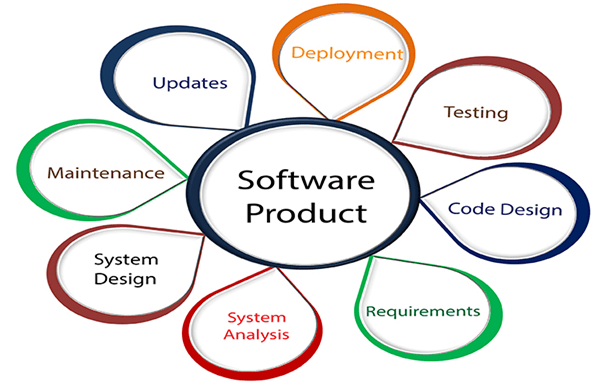A Comprehensive Journey into Software Engineering: Unraveling the Foundations, Practices, and Evolution of a Dynamic Discipline

Introduction:
In the ever-evolving landscape of technology, software engineering stands as the linchpin, orchestrating the creation and evolution of the digital world we inhabit. As a multidisciplinary field that intertwines creativity, logic, and precision, software engineering plays a pivotal role in shaping our digital experiences. This comprehensive exploration delves into the intricacies of software engineering, unraveling its foundations, best practices, and the dynamic evolution that propels this discipline forward. Whether you are a budding enthusiast seeking an initiation into the world of software engineering or an industry professional aiming to deepen your understanding, this journey promises to be an illuminating odyssey.
I. Defining Software Engineering:
- What is Software Engineering?
- Software engineering is a systematic and disciplined approach to developing, designing, testing, and maintaining software systems. It encompasses a structured process to address the challenges of building reliable, scalable, and efficient software solutions.
- Objectives of Software Engineering:
- The primary goals of software engineering include delivering high-quality software within budget and schedule constraints, ensuring maintainability and scalability, and meeting the specified requirements of end-users.
II. Foundations of Software Engineering:
- Software Development Life Cycle (SDLC):
- SDLC represents the sequence of phases through which software evolves, from concept and design to implementation, testing, deployment, and maintenance. Common models include Waterfall, Agile, and Iterative models.
- Requirements Engineering:
- Understanding and documenting user requirements is a fundamental step in software engineering. This involves eliciting, analyzing, and documenting the needs and constraints of end-users to guide the development process.
- Software Design Principles:
- Design principles guide the creation of efficient, maintainable, and scalable software architectures. Concepts like modularity, abstraction, and encapsulation are central to crafting robust designs.
- Programming Paradigms:
- Software engineering embraces various programming paradigms, including procedural, object-oriented, and functional programming. Each paradigm offers distinct approaches to organizing and structuring code.
III. Best Practices and Methodologies:
- Agile Methodology:
- Agile methodologies, such as Scrum and Kanban, emphasize iterative development, collaboration, and flexibility in response to changing requirements. Agile practices foster adaptability and customer-centric development.
- DevOps Practices:
- DevOps integrates development and operations, fostering collaboration and automation throughout the software development life cycle. Continuous integration, continuous delivery, and automated testing are key DevOps practices.
- Quality Assurance and Testing:
- Rigorous testing is integral to software engineering. Test-driven development (TDD) and behavior-driven development (BDD) are methodologies that prioritize testing at early stages, enhancing software reliability.
- Code Review and Collaboration:
- Code reviews promote collaboration and maintain code quality. Version control systems, such as Git, facilitate team collaboration by tracking changes and managing code repositories.
IV. Key Software Engineering Disciplines:
- Front-end and Back-end Development:
- Front-end development focuses on user interfaces and experiences, while back-end development involves server-side logic and database management. Full-stack developers proficient in both domains bridge the gap between front-end and back-end.
- Database Management:
- Database management is crucial for storing, organizing, and retrieving data efficiently. Relational database management systems (RDBMS) like MySQL and NoSQL databases like MongoDB are prevalent choices.
- Mobile App Development:
- Mobile app development caters to the ever-growing demand for smartphone applications. Platforms like iOS and Android require developers skilled in languages such as Swift, Kotlin, and React Native.
- Artificial Intelligence and Machine Learning:
- The integration of AI and machine learning in software engineering enables the development of intelligent systems capable of learning from data and making informed decisions.
V. The Evolution of Software Engineering:
- Historical Milestones:
- Tracing the history of software engineering from its early days with pioneers like Alan Turing and Grace Hopper to the advent of high-level programming languages, such as Fortran and C, showcases the field’s transformative journey.
- Current Trends:
- Modern software engineering is marked by trends such as cloud computing, microservices architecture, containerization (e.g., Docker), and serverless computing. These trends respond to the growing need for scalable and flexible solutions.
- Challenges and Future Directions:
- As software engineering advances, challenges such as cybersecurity, ethical considerations in AI, and the increasing complexity of software systems emerge. The future holds prospects for quantum computing, edge computing, and further integration of AI.
VI. Educational Paths and Career Opportunities:
- Educational Paths in Software Engineering:
- Educational paths in software engineering range from traditional computer science degrees to specialized bootcamps and online courses. Continuous learning is essential in a field that evolves rapidly.
- Career Opportunities:
- Careers in software engineering encompass roles such as software developer, systems architect, quality assurance engineer, data scientist, and DevOps engineer. The versatility of the field allows professionals to specialize based on their interests.
VII. Conclusion:
Software engineering, as both an art and a science, stands as the cornerstone of technological innovation. This comprehensive guide has navigated the intricate landscapes of software engineering, from its foundational principles to current best practices and future directions. As the digital realm continues to expand, software engineering remains at the forefront, shaping the way we interact with technology. Whether you are an aspiring software engineer, a seasoned developer, or a curious observer, this journey into the heart of software engineering invites you to explore, learn, and contribute to the ever-evolving tapestry of the digital world.




